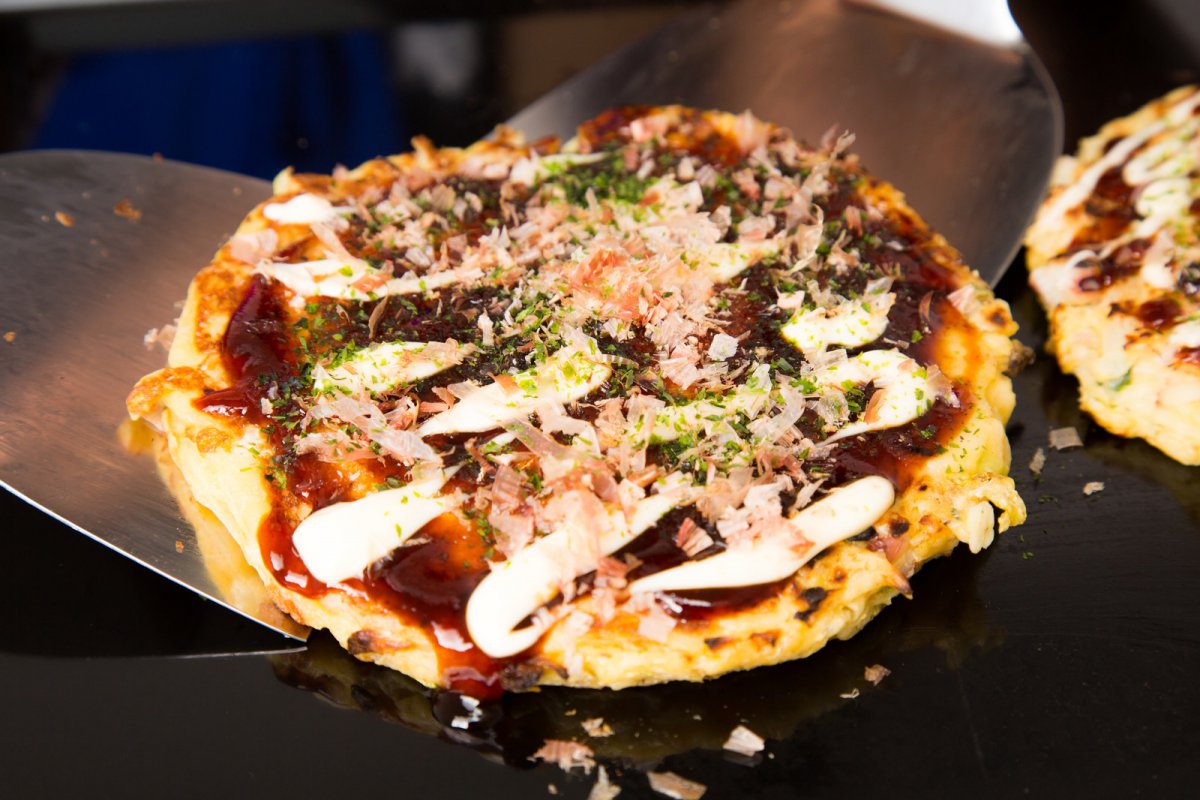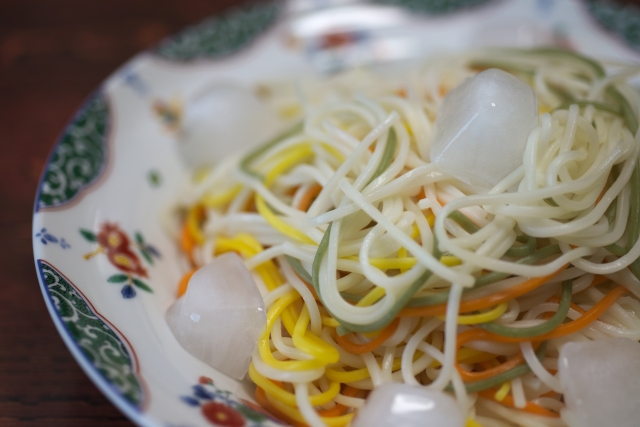While many foreigners may associate Japan with rice, noodles are a big part of the country’s food culture as well. In fact, the art of noodle-making has been a practice in Japan for more than a thousand years. No matter where you grew up, it’s a good bet that at some point, you tried some instant ramen, so you’ve already been introduced to the grand tradition of Japanese noodles.
Whether served hot or cold, in a dashi or tsukemen-style, there are so many ways Japanese people enjoy noodles made from wheat, bean flour, yams, buckwheat, and more; no trip would be complete without sampling just a little of what’s out there. The etiquette and multitude of choices at some eateries can be intimidating, so before you go, read up on the different types of noodles and how they are enjoyed. That way, when you step up to the front of the line at a busy shop, you’ll know what to expect.
Ramen
If there’s one type of Japanese noodle you’ve had before, it’s probably ramen. A staple of grocery stores all over the world, instant ramen is cheap and plentiful. Japan is no different, with supermarket shelves filled with Cup Noodles and other varieties. But not all ramen is for poor college students. There are incredible restaurants all over Japan that specialize in the dish, including some that have earned Michelin stars.
Ramen generally consists of wheat noodles in a dashi, or broth, and paired with toppings like egg, pork, bean sprouts, seaweed, green onions, and other goodies. There are four main types of dashi: 1. Shoyu, or soy sauce; 2. Miso, or fermented soybean paste; 3. Sio, a clear, salty broth; and 4. Tonkotsu, or pork. There are also varying levels of spice and many specialty versions. Everywhere you go, it’ll be just a little bit different.
Many ramen restaurants in Japan have a special way of ordering. Instead of talking to a wait staff, you go up to a vending machine and select your order. After inserting your money, you receive a ticket. Sit at the bar and give your ticket to the chef, and they will deliver a big (usually bigger than you can finish) bowl. You’ll get both chopsticks and a spoon, and don’t worry about slurping your noodles – it’s not considered impolite in Japan!
Even after trying the gourmet version, you may still hold onto fond memories of the cheap stuff. For a fun nostalgia trip, try the Cup Noodles Museum in Osaka and Yokohama, where you can learn the history of this popular food and make your own customized package of instant noodles. And if you’d like to learn how seasoned chefs make the real deal, you can take a ramen cooking class.

Soba noodles
Most first-time visitors to Japan are unfamiliar with soba, or buckwheat noodles, which are thin and sturdy, great for mopping up thick sauces. Don’t be turned off by the color, which can sometimes be quite gray depending on the restaurant – this is a true delicacy! Soba is available in many preparations: cold or hot, in a soup or tsukemen-style; however, you’re most likely to encounter it in a couple popular street foods: yakisoba and okonomiyaki.
Yakisoba
Yakisoba consists of soba noodles fried on a flat-top along with pork, cabbage, veggies, and other ingredients that differ depending on where you find it, all covered in an addictive sauce. It’s usually inexpensive and served with red ginger. You’ll see yakisoba sold at street stands, and the version at the konbini is pretty good, too, making it a great cheap eat when you’re on the run or out bar-hopping. If you’re really daring, you can try a konbini specialty: the yakisoba sandwich.
Okonomiyaki
Okonomiyaki is essentially a big egg pancake stuffed with soba, cabbage, and meat, and covered in a thick, tangy sauce. There are different versions, with the most popular variants found in the Kansai area (Osaka and Kyoto) and Hiroshima. You’ll usually encounter okonomiyaki at izakayas or casual teppanyaki eateries, and served in large portions perfect for sharing with a big group enjoying a few drinks late at night. No visit to Hiroshima is complete without trying their famous okonomiyaki!
Udon
Udon are thick, tube-like noodles made from wheat flour, easily distinguishable from ramen or soba because of their size. Udon is often served with kakejiru, a simple broth made with soy sauce, and topped with tempura, green onions, deep-fried tofu, and kamaboko, a thin fish cake that is usually white with a pink spiral design.
Great for warming up on a cold winter day, udon is also generally inexpensive, and there are udon-centric fast food options where you can get a solid meal for a low price. The best udon is made by hand, and to really get a feel for what goes into creating these soft noodles, you can try a cooking class where you’ll be trained in the art of udon.
What is “Tsukemen?”
When you get ramen or soba in the United States, it almost always comes in the form of a soup, mixed with the other ingredients. However, there’s another way of consuming them that is very Japanese. This is called Tsukemen, and it’s when the noodles and broth are served separately. Sometimes the noodles will be cold, and you can dip them in the warm broth before every bite. Before leaving Japan, find a good restaurant and try this method, as you may find you like it better than the preparation you’re used to.

Hot vs. Cold Noodles
While some cultures stick to hot noodle soups, it’s not uncommon in Japan to enjoy cold noodles, especially in summer, when the weather can be humid and stifling. Zaru soba is enjoyed in the warmer months, and often served tsukemen-style. Hiyashi chuka is a chilled version of ramen that can be topped with egg, tomatoes, and cucumbers.
Other Japanese noodles you may not know
Another noodle dish popular in summer is somen. Incredibly thin, they have a mild taste and aren’t too filling. Somen is not as common as many of the above dishes, so you may have to seek it out in restaurants, but if you keep an eye out, you might find a somen salad with a vinegar-based dressing is just the thing you need as you take a break from the heat.

Somen 
Harusame
One more variety of note is harusame, or glass noodles. It may be tough to distinguish between harusame and somen. The difference is that somen are wheat noodles while harusame is made using bean flour. There are also shirataki noodles, made from yam flour, and hiyamugi, similar to somen and sometimes served chilled over ice. You may not see any of these in touristy spots, but if you’re taking in a tour of authentic Japanese cuisine and spot them on the menu, don’t be afraid and give them a try!

Shirataki 
Hiyamugi
By now you will probably understand the central role of noodles in the Japanese cuisine. In addition to the different types of noodles, you will find that there are many different regional styles too. Noodles are enjoyed throughout the year, with cold noodles popular in the hot summer season and think, hot udon noodles preferred in the winter. Hopefully you didn’t get too hungry while reading all about the different type of noodles popular in Japan!
Follow us on Instagram, Facebook and Twitter for more travel inspiration. Or tag us to get featured!
Happy travelling!
Other blogs you will enjoy

Gregg Maxwell Parker is an author and screenwriter best known for the book Troublemakers. Originally from the United States, he moved to Kobe in 2018. Gregg and his wife, Eriko, are the minds behind the blog As Seen In Japan, where they share pictures and stories from everyday Japanese life. They can be found on Twitter and Instagram.
This post may contain some affiliate links. When you click through and make a purchase we may receive some commission, at no extra costs to you.














Comments
Thank you very much, for this beautiful article . I’m delighted these dishes brought back memories of Japan for me!